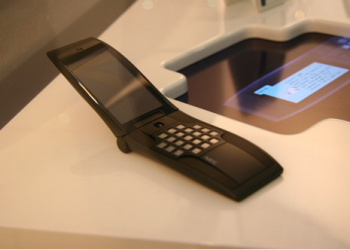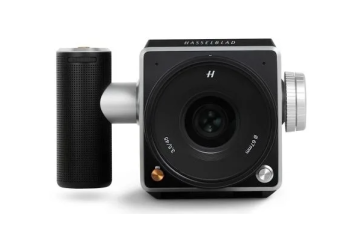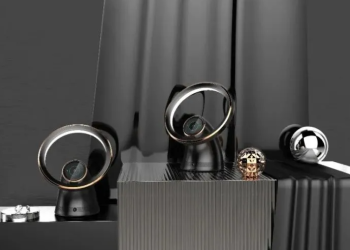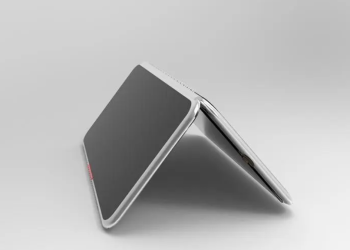Smart thermostats have revolutionized the way we control temperature in our homes, offering unparalleled convenience, energy efficiency, and cost savings. In this article, we’ll explore the benefits of smart thermostats, how they work, top brands in the market, installation process, key features, integration with smart home ecosystems, real-world applications, challenges, and future trends.
Introduction to Smart Thermostats
Definition and Overview
Smart thermostats are devices that allow homeowners to remotely control and automate their heating, ventilation, and air conditioning (HVAC) systems. Unlike traditional thermostats, smart thermostats utilize advanced sensors, connectivity features, and learning algorithms to optimize temperature settings based on user preferences and environmental conditions.
Importance of Temperature Regulation
Maintaining optimal indoor temperatures is essential for comfort, productivity, and overall well-being. Smart thermostats enable precise temperature control, ensuring that your home remains comfortable year-round while minimizing energy waste and reducing utility bills.
How Smart Thermostats Work
Sensors and Connectivity
Smart thermostats are equipped with sensors that monitor indoor temperature, humidity levels, and occupancy. These sensors communicate with the thermostat’s control unit, which then adjusts heating and cooling settings accordingly. Additionally, smart thermostats often feature Wi-Fi or Bluetooth connectivity, allowing users to remotely access and control their HVAC systems via smartphone apps or web portals.
Learning Algorithms
Many smart thermostats employ machine learning algorithms to analyze user behavior, preferences, and environmental data. Over time, the thermostat learns the occupants’ schedule, temperature preferences, and usage patterns, automatically adjusting settings to optimize comfort and energy efficiency.
Remote Access and Control
One of the key benefits of smart thermostats is their ability to provide remote access and control. Whether you’re at home, at work, or on vacation, you can easily adjust temperature settings, create schedules, and monitor energy usage from your smartphone or computer, ensuring that your home is always at the perfect temperature.
Benefits of Smart Thermostats
Energy Efficiency
Smart thermostats can significantly reduce energy consumption by optimizing heating and cooling schedules based on occupancy patterns and external factors such as weather forecasts. By avoiding unnecessary heating or cooling when the home is unoccupied, smart thermostats help conserve energy and lower utility bills.
Cost Savings
In addition to energy savings, smart thermostats can help homeowners save money on their heating and cooling costs. By providing insights into energy usage and recommending ways to optimize efficiency, smart thermostats empower users to make informed decisions that lead to long-term cost savings.
Increased Comfort and Convenience
With smart thermostats, homeowners can enjoy greater comfort and convenience by customizing temperature settings to their preferences and lifestyle. Whether you prefer a cozy temperature in the morning, a cooler environment during the day, or energy-saving mode while you’re away, smart thermostats make it easy to create personalized schedules that suit your needs.
Top Smart Thermostat Brands
Nest
Nest, owned by Google, is one of the most popular smart thermostat brands on the market. Known for its sleek design, intuitive interface, and advanced learning capabilities, Nest thermostats offer seamless integration with other Google Nest products and third-party smart home devices.
Ecobee
Ecobee thermostats are renowned for their energy-saving features, remote sensors, and compatibility with voice assistants such as Amazon Alexa and Google Assistant. Ecobee’s SmartThermostat with Voice Control stands out for its built-in Alexa integration and room-specific temperature monitoring.
Honeywell
Honeywell offers a diverse range of smart thermostats catering to different budgetary and feature requirements. From basic models with programmable schedules to advanced thermostats with Wi-Fi connectivity and energy usage reports, Honeywell provides options for homeowners seeking energy efficiency and comfort.
Installation and Setup Process
DIY Installation vs. Professional Installation
Depending on your technical skills and comfort level, you can choose to install a smart thermostat yourself or hire a professional installer. Most smart thermostat manufacturers provide detailed installation instructions and video tutorials to guide DIY enthusiasts through the process. However, if you’re unfamiliar with HVAC systems or electrical wiring, it’s advisable to seek professional assistance to ensure proper installation and safety.
Compatibility with Existing HVAC Systems
Before purchasing a smart thermostat, it’s essential to check compatibility with your existing HVAC system. Compatibility issues may arise if your system lacks the necessary wiring or if the thermostat’s specifications do not match your HVAC system’s requirements. Many smart thermostat manufacturers offer compatibility check tools on their websites to help users determine the suitability of their systems.
Programming and Customization Options
Once installed, smart thermostats offer a range of programming and customization options to tailor temperature settings to your preferences. You can create custom schedules based on your daily routine, adjust temperature settings remotely via smartphone apps, and receive alerts and notifications about HVAC system status and energy usage.
Smart Thermostat Features
Programmable Schedules
Smart thermostats allow users to create personalized heating and cooling schedules to match their daily routines. Whether you prefer warmer temperatures in the morning, cooler temperatures at night, or energy-saving mode while you’re away, programmable schedules ensure that your home is always comfortable without wasting energy.
Geofencing
Geofencing is a feature that uses your smartphone’s GPS location to detect when you’re approaching or leaving home. By setting up geofencing parameters, you can configure your smart thermostat to automatically adjust temperature settings based on your proximity to home, ensuring optimal comfort and energy efficiency.
Energy Usage Reports
Many smart thermostats provide detailed energy usage reports and insights to help users monitor and manage their energy consumption effectively. By tracking heating and cooling patterns, identifying energy-saving opportunities, and setting goals for reducing usage, homeowners can take proactive steps to lower their energy bills and reduce their environmental footprint.
Integration with Smart Home Ecosystem
Compatibility with Voice Assistants
Smart thermostats seamlessly integrate with popular voice assistants such as Amazon Alexa, Google Assistant, and Apple Siri, allowing for hands-free control and voice-activated commands. Whether you’re adjusting temperature settings, checking energy usage, or scheduling HVAC operations, voice control adds an extra layer of convenience to your smart home experience.
Integration with Other Smart Devices
In addition to voice assistants, smart thermostats can communicate and coordinate with other smart home devices and systems. For example, they can work in tandem with smart lighting, smart locks, and security cameras to optimize energy usage, enhance home security, and create personalized home automation scenarios tailored to your preferences.
Case Studies: Real-World Applications
Residential Use Cases
In residential settings, smart thermostats have been instrumental in improving comfort, reducing energy consumption, and lowering utility bills. By automating temperature control based on occupancy, weather conditions, and user preferences, smart thermostats help homeowners create energy-efficient and comfortable living environments year-round.
Commercial Use Cases
Smart thermostats are also gaining traction in commercial buildings, where they play a vital role in optimizing HVAC operations, maximizing energy efficiency, and reducing operational costs. From office buildings and retail stores to hotels and healthcare facilities, smart thermostats offer scalable solutions for managing temperature settings and ensuring occupant comfort in commercial environments.
Challenges and Considerations
Initial Cost
One of the primary barriers to adopting smart thermostats is the initial cost, which can be higher than traditional thermostats. However, it’s essential to consider the long-term benefits in terms of energy savings, cost reductions, and increased comfort when evaluating the investment in a smart thermostat.
Compatibility Issues
Compatibility issues with existing HVAC systems can pose challenges during the installation process, particularly for older or less sophisticated systems. It’s crucial to verify compatibility and ensure that your HVAC system meets the requirements specified by the smart thermostat manufacturer to avoid installation complications and functionality issues.
Data Privacy and Security Concerns
As with any connected device, smart thermostats raise concerns about data privacy and security. Since smart thermostats collect and transmit sensitive information about users’ habits, preferences, and occupancy patterns, it’s essential to choose reputable brands with robust security measures and transparent data handling practices to protect against potential privacy breaches and cyber threats.
Future Trends and Innovations
AI Integration
Future smart thermostats are expected to incorporate advanced artificial intelligence (AI) algorithms to analyze data, predict user behavior, and optimize energy usage automatically. By leveraging machine learning and predictive analytics, smart thermostats will become even more intuitive and efficient, adapting to users’ preferences and environmental conditions in real-time.
Predictive Analytics
Predictive analytics will play a significant role in future smart thermostats, enabling them to anticipate temperature fluctuations, weather patterns, and occupancy trends to proactively adjust settings and optimize energy efficiency. By forecasting heating and cooling demands, smart thermostats can minimize energy waste and ensure optimal comfort without the need for manual intervention.
Renewable Energy Integration
With growing emphasis on sustainability and environmental conservation, future smart thermostats will integrate seamlessly with renewable energy sources such as solar panels, wind turbines, and battery storage systems. By coordinating HVAC operations with renewable energy generation and storage, smart thermostats will enable homeowners to maximize self-consumption, reduce reliance on the grid, and contribute to a cleaner, greener future.
Conclusion
In conclusion, smart thermostats offer a myriad of benefits, including energy efficiency, cost savings, increased comfort, and convenience. With advanced features such as remote access, learning algorithms, and integration with smart home ecosystems, smart thermostats empower homeowners to optimize temperature control, reduce energy consumption, and enhance their overall quality of life. As technology continues to evolve, we can expect smart thermostats to play an increasingly important role in creating sustainable, comfortable, and connected homes.

FAQs After The Conclusion
- Are smart thermostats compatible with all HVAC systems?
- Smart thermostats are compatible with most modern HVAC systems, including central heating and cooling systems, heat pumps, and multi-zone systems. However, compatibility may vary depending on the specific model and features of the smart thermostat, as well as the wiring and configuration of the existing HVAC system.
- Can smart thermostats be controlled remotely?
- Yes, smart thermostats can be controlled remotely via smartphone apps or web portals, allowing users to adjust temperature settings, create schedules, and monitor energy usage from anywhere with an internet connection.
- Do smart thermostats require a Wi-Fi connection?
- While some smart thermostats can function without a Wi-Fi connection, Wi-Fi connectivity is essential for accessing remote control features, receiving software updates, and integrating with other smart home devices and services.
- How much energy can I save with a smart thermostat?
- The amount of energy savings achieved with a smart thermostat depends on various factors, including your heating and cooling habits, the efficiency of your HVAC system, and local climate conditions. On average, users can expect to save between 10% and 20% on their heating and cooling costs with a smart thermostat.
- Can smart thermostats learn my temperature preferences?
- Yes, many smart thermostats feature learning algorithms that analyze your temperature preferences, occupancy patterns, and usage habits to create personalized heating and cooling schedules tailored to your lifestyle.
- Do smart thermostats require professional installation?
- While some users may choose to install smart thermostats themselves, professional installation is recommended, especially for users with limited technical knowledge or complex HVAC systems. Professional installers can ensure proper wiring, compatibility, and functionality, minimizing the risk of installation errors and complications.
- Are smart thermostats compatible with voice assistants?
- Yes, many smart thermostats are compatible with popular voice assistants such as Amazon Alexa, Google Assistant, and Apple Siri, allowing for hands-free control and voice-activated commands.
- What security measures are in place to protect my data with a smart thermostat?
- Smart thermostat manufacturers implement various security measures, including encryption, authentication, and secure data transmission protocols, to protect user data from unauthorized access and cyber threats. Additionally, users can take steps to enhance security by regularly updating firmware, using strong passwords, and enabling two-factor authentication where available.



![Top 10 Smart Home Devices of [Current Year]: Reviews and Comparisons](https://digital-electron.com/wp-content/uploads/2024/02/image-42-350x250.png)








